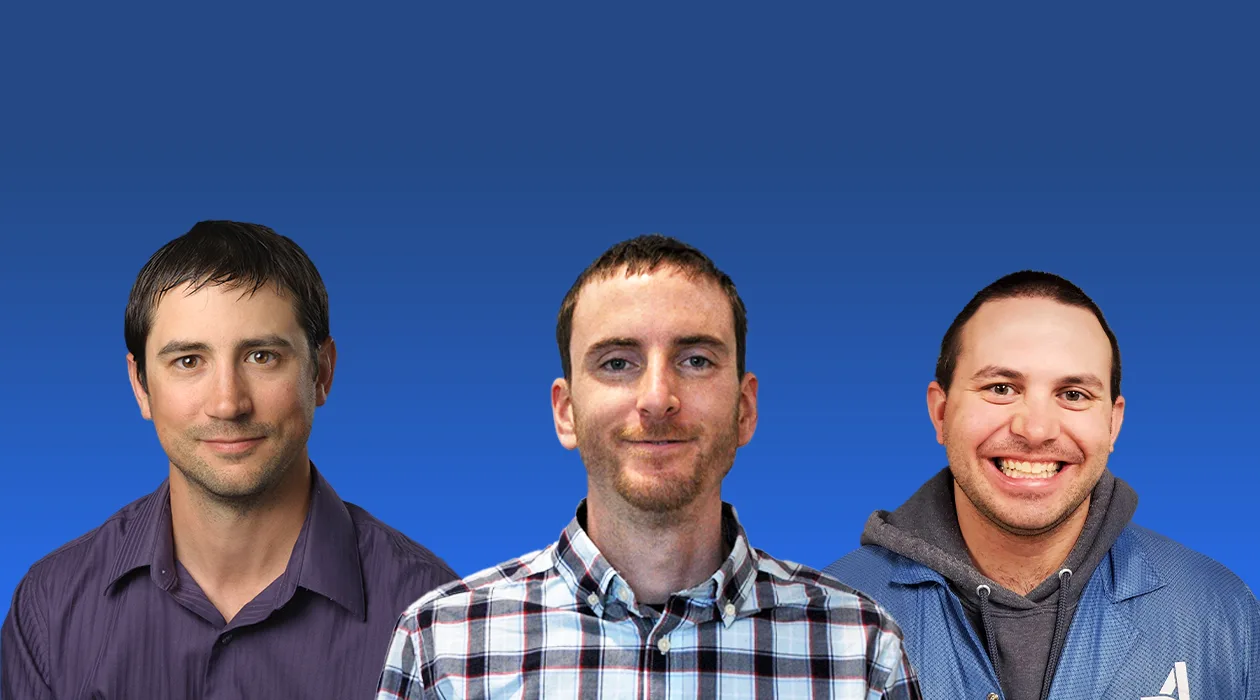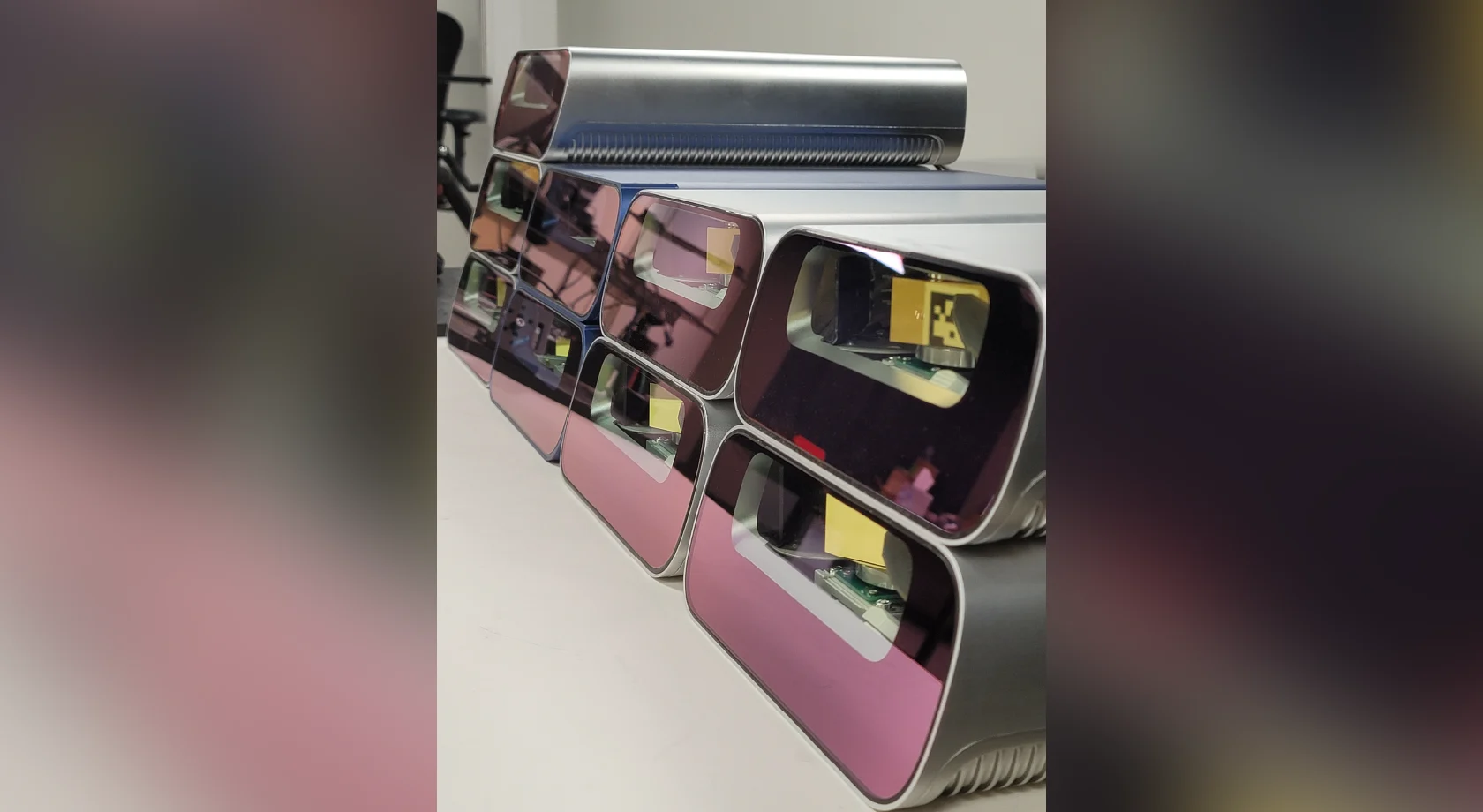Aurora Voices with the Gallatin College Photonics Program
Meet our team | February 24, 2022 | 3 min. read

Our Aurora Voices series celebrates the people and teams whose unique experiences, backgrounds, and voices bring Aurora’s mission to life.
Meet John, Will, and Trent from Aurora's lidar team
When we acquired Blackmore in 2019, we were excited about two things: welcoming the preeminent team in FMCW lidar technology to Aurora and opening our offices in Bozeman, Montana, where we were eager to build upon the rich photonics industry in the region and tap into the deep bench of expert engineers and integrated optics manufacturers.
In 2016, Trent Berg, a co-founder of Blackmore and a leading lidar engineer at Aurora, saw the need for a robust photonics workforce to meet the demands of the growing industry in Gallatin Valley. He founded the Photonics and Laser Technology Program at Gallatin College, MSU to train the next generation of professional technicians to build and develop the photonic devices that continue to transform industries like communications, defense, and, critically, transportation. Since its founding, every graduate of the program has found roles at local companies, including six who work at Aurora. We are committed to strengthening our presence in Montana, and we are proud to be a part of the industry advisory board of the Gallatin College MSU Photonics and Laser Technology Program.
This edition of Aurora Voices focuses on two graduates from the Gallatin College Photonics and Laser Technology Program: John Janik, an Engineering Technician, and Will Boekel, a Manufacturing Technician. Read on to hear from Trent, Will, and John about the Gallatin College Photonics program, their roles at Aurora, and why they love the Big Sky Country.
Tell us about your role at Aurora.
Trent: As the Technical Lead Manager of Lidar Test and Validation, I lead the team that focuses on validating the performance of FirstLight Lidar and other lidar sensors used in our autonomy stack. We work closely with many other teams to do component and subassembly validation before they are integrated into a full assembly. We also work closely with the reliability team to ensure that we are producing a robust lidar sensor. Finally, we work with the manufacturing and quality teams to design and implement robust component, subassembly and end-of-line tests to ensure every sensor that leaves the facility is high performing.
John: As an Engineering Technician on the Opto Mechanical Team, I create the initial builds of the optical components that will eventually go into our lidar units, and I work closely with our R&D engineers to communicate any issues throughout assembly and testing. It is incredibly rewarding to be the person who builds, tests, and validates the first prototypes of our technology.
Will: As a Production Technician, I focus on building and validating our FirstLight Lidar units, which will ultimately be placed on our vehicles. At Aurora, we’re writing the build manuals for truly cutting-edge technology rather than building units for established industries that have been doing things the same way for decades. We’re solving complex problems every day to bring self-driving technology to market, so we prioritize environments where we can learn fast and iterate quickly. This means every idea and suggestion for improvement has merit, and we truly embody our company value to “Win Together.”
John is often in the optics lab, assembling prototype collimators and working with lenses.
Tell us about the Gallatin College MSU Photonics and Laser Technology Program.
Trent: Bozeman is the origin of some of the greatest advancements in lasers and optical technology, and it continues to be an epicenter of the optics and photonics industry. I saw the opportunity to continue building Bozeman’s leadership in the space while also building up our community’s workforce in a cutting-edge field that has revolutionized everything from medicine to communications, and is currently transforming transportation. The program is intense, and it’s worth it! Graduates walk away as experts in application-based testing, electronics, and photonics.
John: The program consists of two years of intensive hands-on education, which was great for me because I prefer hands-on learning. We built up strong foundations in electronics and photonics, and trained extensively in how to build and test lasers.
Will: The program has a strong industry component and a required 250-hour internship. This gave us all a leg up in the industry and set us up for success in our future work.
How does your work advance self-driving?
John: FirstLight Lidar, along with our cameras and radar, allow vehicles powered by the Aurora Driver to accurately get the information they need about the world around them. The Opto Mechanical Team is focused on making refinements to the optical components in our lidar units that will make them more powerful and efficient, allowing our vehicles to see further and with even greater accuracy.
Will: Working in production, I handle all the individual parts of our lidar units, including fiber optic cables. For those who aren’t familiar, fibers can be incredibly tricky to work with! Our lidar-on-a-chip technology will eventually eliminate fibers and improve the scalability of our lidar units, and I am eager to be a part of the team that delivers this cutting-edge technology.
FirstLight Lidar units fresh off calibration in Bozeman.
How do you spend your free time in Big Sky, Montana?
John: I’m an avid fly fisher, I even used to be a fly fishing guide! Find me on the river in my free time.
Will: Montana is very outdoorsy, which is what brought me here from Colorado. I’m passionate about caving and am an officer of the Northern Rocky Mountain Grotto. We are currently resurveying the Bighorn-Horsethief Cave system, one of the region’s most significant caves measured at 14.6 miles long!


If you just felt inspired by what you read, we’re hiring in all disciplines to help us solve one of the biggest challenges of our generation. Check out our Careers page to see open positions and learn more about what it’s like to work at Aurora.
Delivering the benefits of self-driving technology safely, quickly, and broadly.